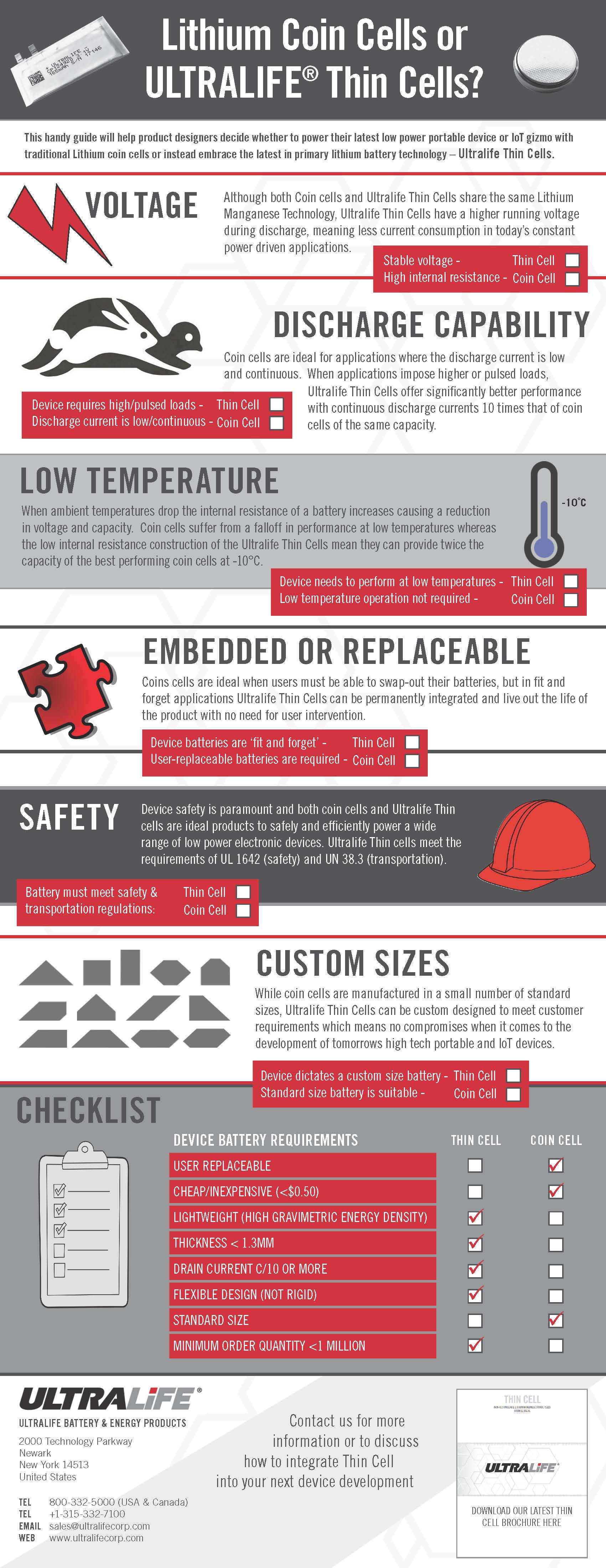Smart device battery manufacturer Ultralife Corporation has produced a new infographic comparing its Thin Cell range of batteries with industry standard coin cell batteries.
The infographic, which is available to download from the Ultralife website, helps product designers and design engineers make an informed decision when specifying batteries for portable electronics and Internet of Things (IoT) devices.
As technology gets smaller, having suitable batteries becomes increasingly important. Both coin cell and Thin Cell batteries are vital for low power portable devices and use similar technologies, but there are crucial design and performance differences between the two.
The infographic guides design engineers through the key design considerations involved in choosing from these battery types.
Coin cells are ideal for low current continuous use but suffer from a falloff in performance at colder temperatures. Comparatively, Ultralife’s
Thin Cells are optimal for frequent high-current discharges and provide double the performance of coin cells at lower temperatures. These properties allow Thin Cells to be used in a wider variety of environments.
“Whether it’s wearable devices or radio-frequency identification (RFID) tags for tracking valuable assets, there is a growing market for low power devices,” explains Michele Windsor, global marketing manager at Ultralife Corporation. “Within this market space there is a wide range of different applications, each with unique requirements. Design engineers need to understand the capabilities of the available battery options to make the right decision.
“With our infographic, we want to spread information on our new line of Thin Cell batteries, allowing engineers to make informed decisions and choose the best battery for their products. By considering the points on the infographic and working through the checklist, designers can ensure their product is powered properly.”
While coin cells come in a standard range of sizes, Thin Cell are highly customisable to fit better into more complex and intricate product designs. Thin Cell batteries can be manufactured to fit a large range of shapes and sizes, even as thin as 0.4 mm. This high level of customisation makes Thin Cell perfect for the next generation of small, interconnected smart devices.
Thin Cell batteries are therefore suitable for RFID asset tracking systems in the logistics and warehousing sector. They are also becoming increasingly prevalent in wearable devices and drug delivery systems within the medical industry.
 Engineer News Network The ultimate online news and information resource for today’s engineer
Engineer News Network The ultimate online news and information resource for today’s engineer






